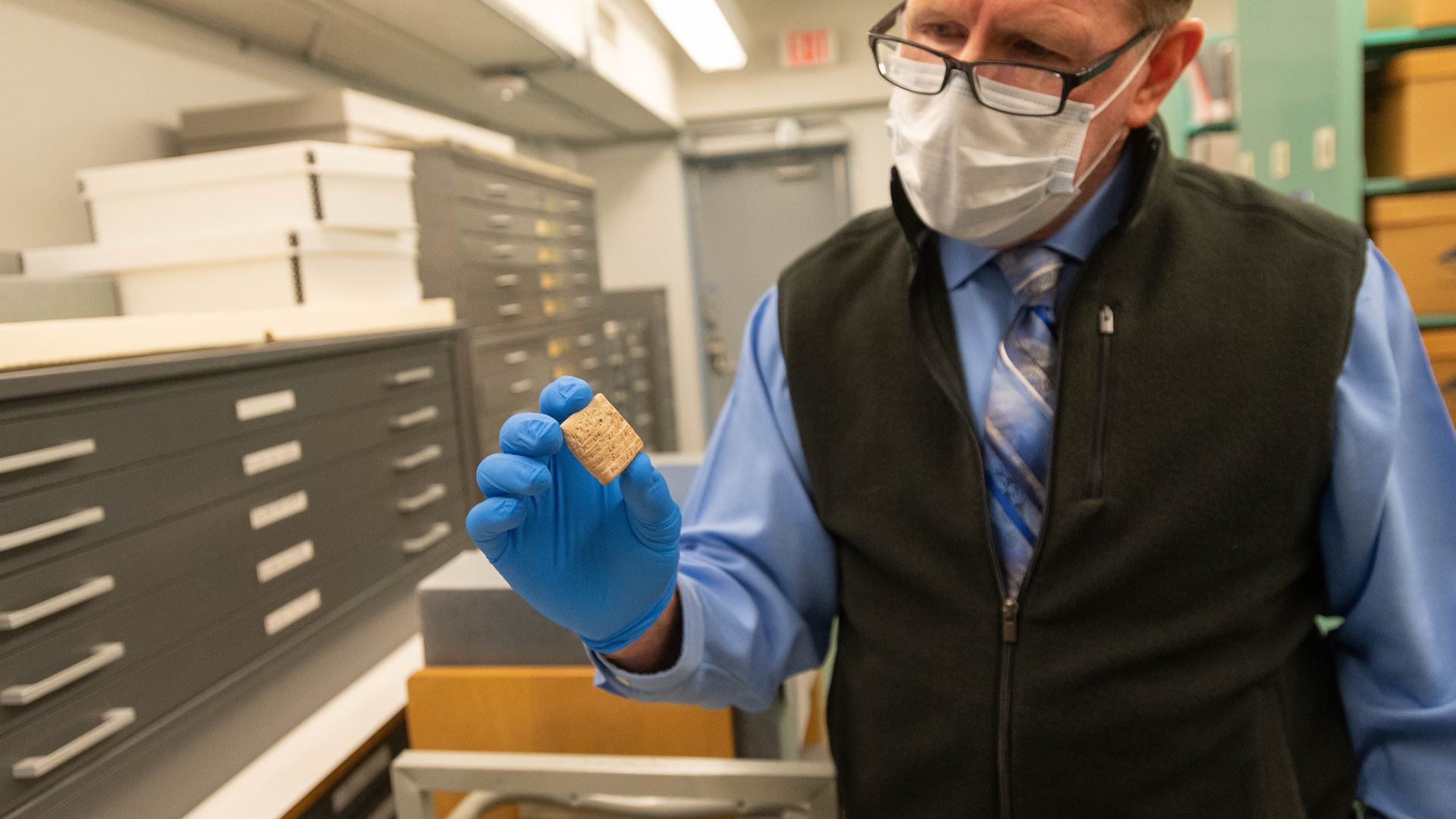The Archives and Special Collections department at the New Mexico State University Library will be celebrating 50 years of preserving the past of Southern New Mexico and providing access to historical documentation for students, researchers and the community.
The Rio Grande Historical Collections was formally chartered on Jan. 29, 1972. At the time, NMSU President Gerald W. Thomas recognized the need to create an archives program at the university to ensure the documentary evidence of the region’s cultural heritage would not be lost. He became an avid supporter of establishing the unit.
“He worked with the library director and with the history department to start an archive program here, and that was the Rio Grande Historical Collections,” said Dennis Daily, department head of NMSU Archives and Special Collections. “The purpose was to collect unique historical documents that illuminate the history and cultural heritage of southern New Mexico and the U.S.-Mexico border region, and to ensure that they would be preserved and made available to future generations.”
Since NMSU is a land-grant research university, initial materials that were collected covered topics such as farming, ranching, food production, management of natural resources, and community history.
“Think of family papers, correspondence, financial records, business records, diaries, things like that,” Daily explained.
The program receives most of its archival collections through donations from families, individuals, organizations and businesses, garnered from decades of community outreach by the department.
Now, 50 years after its establishment, the collection occupies much of the top three floors of Branson Library, located on NMSU’s Las Cruces campus.
“If you took all these boxes and lined them up side by side, they would stretch about 15,000 feet,” Daily said. “That’s nearly three miles.”
The types of materials collected over the decades have gone through their own evolution, especially as technology continues to advance in multiple ways.
“In the early formation of the archival repository, it was primarily paper-based materials and that type of format,” said Jennifer Olguin, RGHC archivist. “As technology evolves, we tend to get more digital objects, so we have to think of how to preserve the information on floppy disks, CDs, different types of media that come in. We have to keep up with the current standards and best practices. We never know what we’re going to get when items are being donated.”
The massive collection also includes close to two million historic photographs, audio materials like oral history interviews, maps, microfilm, DVDs, VHS tapes, and more. The collections have been used by researchers from around the world and featured in publications, exhibitions and documentaries.
“These are unique collections. For most of what we have, there is only one copy in existence,” Daily said. “These primary source materials are what researchers use to write history, and they’re available to the students and faculty at NMSU, as well as to scholars across the country. We get a lot of visiting faculty who come to conduct research on topics related to the border region.”
Many of the collections preserve documents of local importance, including the Amador family papers, from a prominent pioneer Mexican family that settled in Las Cruces in the late 1840s.
“One of the fascinating parts of that collection is the correspondence,” said Olguin. “It seems they kept every single letter, which is to our benefit, and researchers’ benefit, because it documents the cultural heritage and the social life of Las Cruces back in the day. Just by reading the letters, you can kind of time travel and see how they were living, what the living conditions were like, who they had contact with, who they were conducting business with, who was staying at their hotel. It’s just fascinating reading the letters and immersing yourself into Las Cruces back at that time.”
Archives and Special Collections has been housing, organizing and preserving these materials for researchers’ benefit, while educating the community about the historic origins of the region. The RGHC continues to grow, add to the stacks of files, and provide content that will serve future generations at NMSU and beyond who study the cultural heritage of southern New Mexico.
“The materials that we have here reflect the history of southern New Mexico and in some sense serve as the collective community memory of the people who have made this place their home over the past centuries,” Daily said.
An exhibition celebrating the Rio Grande Historical Collections’ 50th anniversary will open Jan. 29 in the archives’ gallery, located on the fourth floor of Branson Library. Due to the current surge in COVID-19 infections, a related event featuring historians and archivists discussing the development of the RGHC and the role of archives in preserving history has been postponed to a later date. Other events are being planned throughout the year to mark the anniversary.
Anyone interested in donating historical materials to the RGHC can find contact information on the Archives and Special Collections website at https://lib.nmsu.edu/archives/specialcollections.html. Financial contributions to help the program collect, preserve, and make accessible important archival treasures can be made to the Rio Grande Historical Collections fund through the NMSU Foundation at https://advancing.nmsu.edu/givenow. To keep up to date on the department’s latest news and developments, visit https://openstacks.nmsu.edu.

